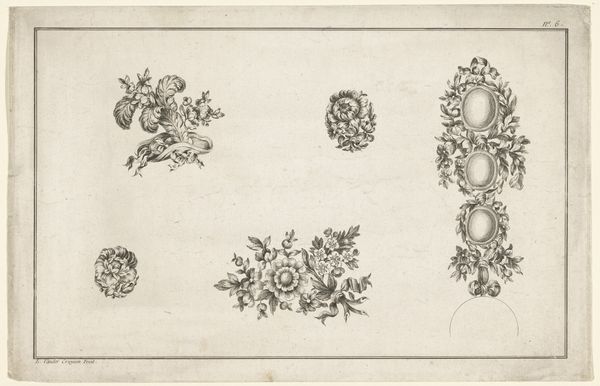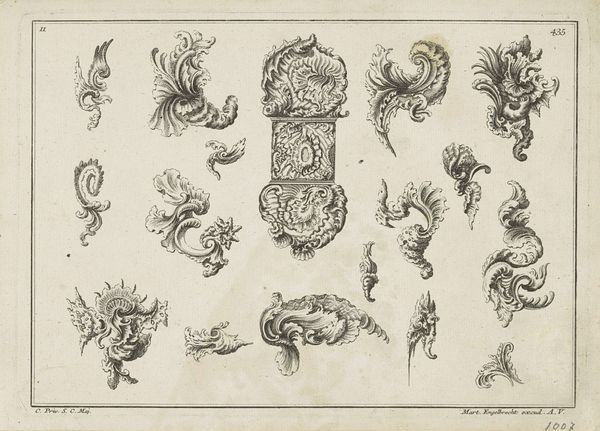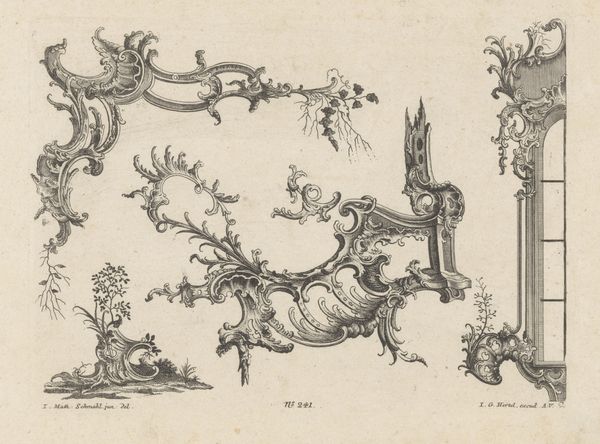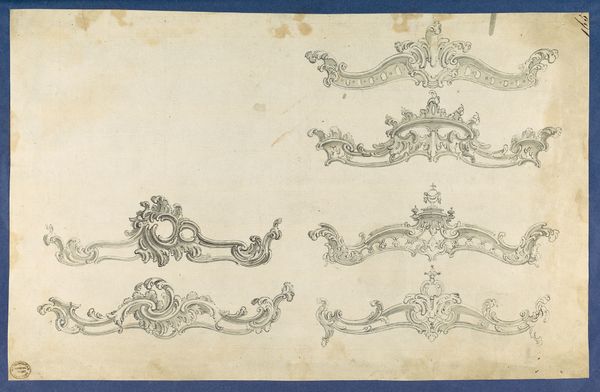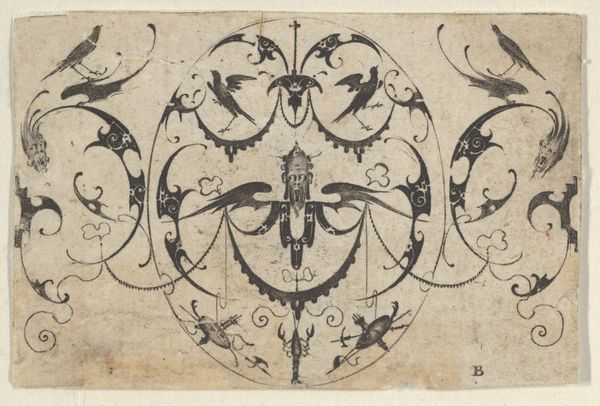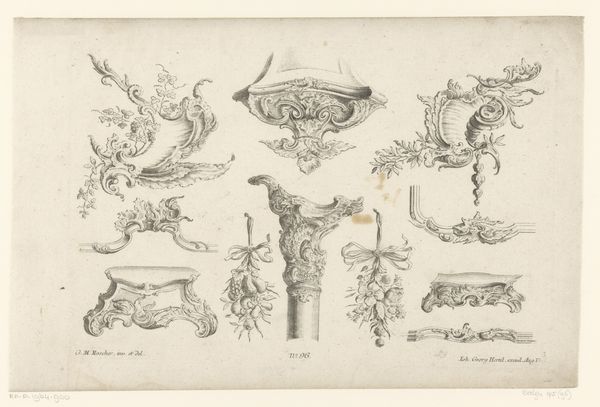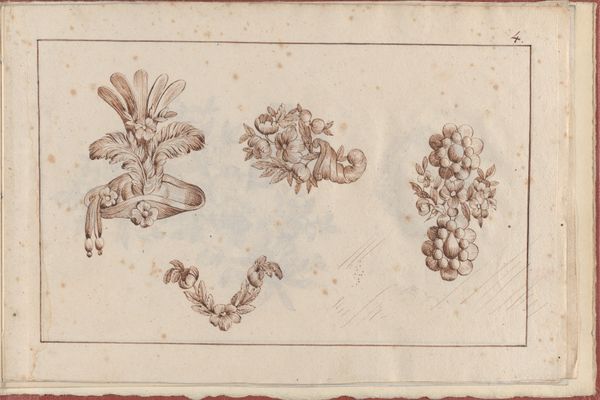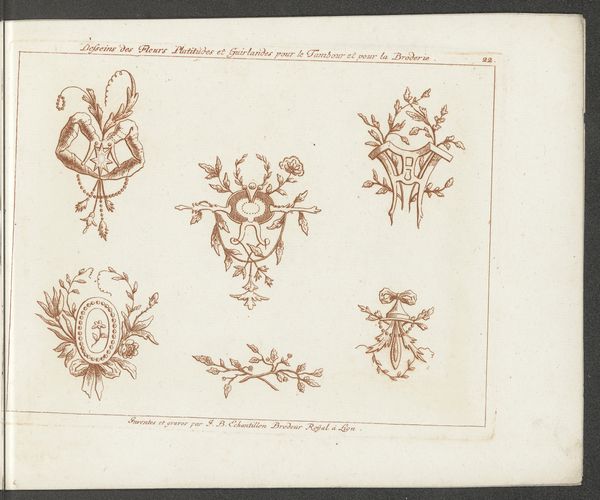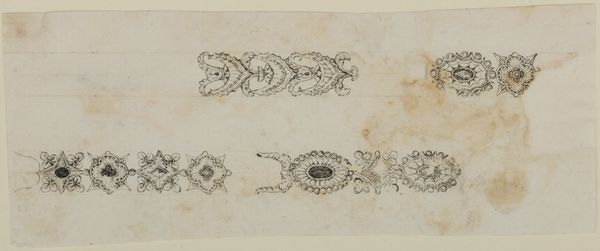
Banknote motif: ten different ornamental lathe work elements including a disk embellished with berries and flowers, a wreathed sword, a set of scales, a berried vine, an anchor and chain, a bracket of vine leaves and four designs for borders 1819 - 1847
0:00
0:00
drawing, print, paper, engraving
#
drawing
#
neoclassicism
# print
#
paper
#
coloured pencil
#
geometric
#
line
#
decorative-art
#
engraving
#
sword
Dimensions: plate: 2 7/16 x 4 7/16 in. (6.2 x 11.3 cm) sheet: 4 x 5 1/2 in. (10.2 x 14 cm)
Copyright: Public Domain
Cyrus Durand made this plate of banknote motifs using lathe work sometime in the 19th century, but the exact date isn't known. He clearly had an eye for decorative detail. The arrangement is like a sampler of guilloche patterns, those intricate designs you often see on currency, stock certificates, and other important documents. Durand includes images such as a sword, scales, and anchor, each wreathed in foliage. These would have been loaded with symbolic meaning and acted as visual markers of a banknote’s legitimacy. Back then, counterfeiting was rampant, so the visual design of money played a crucial role in establishing trust. Banks and other institutions were very concerned with the politics of imagery. They tried to create banknotes that were hard to copy and evoked a sense of authority. To know more, you might explore the archives of currency-issuing institutions from the 19th century, comparing the designs that were proposed with what was finally adopted. The history of money is full of such telling details about the cultures that produced it.
Comments
No comments
Be the first to comment and join the conversation on the ultimate creative platform.


